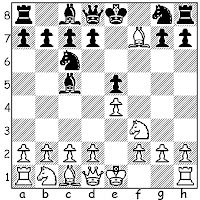Somehow, the following game escaped being posted here shortly after being played, three years ago. Perhaps I tried to put it up, but kept falling asleep.
It is another example of the Jerome Countergambit, and it shows that leaving White a pawn up is not a guaranteed win for the first player, or loss for the second.
perrypawnpusher - superlopez
blitz, FICS, 2010
1.e4 e5 2.Nf3 Nc6 3.Bc4 Bc5 4.Bxf7+
4...Kxf7 5.Nxe5+ Nxe5 6.Qh5+ Kf8 7.Qxe5 Bxf2+
The Jerome Countergambit.
Black reasons that if there is anything useful in the Bishop sacrifice, he would like to have a bit of it as well. Also, he gets to exchange Queens and blunt White's attack.
8.Kxf2 Qh4+ 9.g3 Qf6+ 10.Qxf6+ Nxf6
What I remember from my first chess book, Chess the Easy Way, by Fine, is that all White has to do now is exchange down to the K + P vs K endgame and collect the point. Of course, it has been about 50 years since I read the book, so maybe I am simplifying it in my mind...
11.Nc3 d6 12.d3 Kf7 13.Bg5 Rf8 14.Bxf6 Kxf6 15.Ke3 Ke7 16.Nd5+ Kd8
17.Rhf1 Rxf1 18.Rxf1 c6 19.Rf8+ Kd7 20.Nc3 Ke7 21.Rh8 h6 22.Ne2 b6 23.Nf4
Here I missed a chance to grab another pawn with 23.Nd4 Bb7 24.Nf5+ Kf6 25.Rxa8 Bxa8 26.Nxd6.
23...Bb7 24.Rxa8 Bxa8 25.d4 Kf6 26.h4 c5 27.dxc5 dxc5 28.c4 g5 29.hxg5+ hxg5 30.Nd5+ Ke5
White has a pawn advantage, but Black's active King and Bishop vs Knight give the second player significant drawing chances (especially in blitz).
31.Nc3 a6 32.a4
Still thinking in a static manner, whereas 32.Nd5 b5 33.Nc7 Bxe4 34.cxb5 axb5 35.Nxb5 would have won a useful second pawn.
32...Bc6 33.b3 Bb7 34.Nd5
34...b5
Actually, Black has established a very strong blockade of White's pawns and pieces, and he probably could have held the game after 34...Bc6! for example 35.Nxb6 a5 36.Nd5 Bb7 37.Kf3 Bc8 38.Nc3 Bd7 39.Nd5 Bc8 40.Nc7 Kd4 41.Nb5+ Ke5 42.Ke3 Bg4 and it is hard seeing White make any headway.
35.axb5 axb5 36.Nc3
More plodding play, when 36.cxb5 was the right move, as 36...Bxd5 37.exd5 Kxd5 is answered by 38.Kf3 and success on the Kingside.
36...bxc4 37.bxc4 Ba6
Again, 37...Bc6 contained the drawing idea.
38.Nb5 Bc8 39.Nc3 Bh3 40.Na4 Bf1 41.Nxc5 Bxc4 42.Nd3+ Ke6 43.Nc5+ Ke5
44.Nd7+ Ke6 45.Nc5+ Ke5 46.Nd7+ Kd6
Black does not want the draw by repetition of position. He should have been happy with 46...Ke6.
47.Nf8 Bf1
The Bishop needed to go to g8 to help continue the blockade. Now White makes progress.
48.Nh7 g4 49.Nf6 Bh3 50.Kf4 Ke6 51.e5
Playable was 51.Nxg4.
51...Kf7 52.Ne4 Ke6 53.Nf2 Kd5 54.Kf5 Kd4 55.e6 Bf1 56.e7 Bb5 57.Nxg4
57...Kd5 58.Nf6+ Kd6 59.e8Q Bxe8 60.Nxe8+ Ke7 61.Nf6 Kf7 62.g4 Kg7
63.g5 Kf7 64.Nh5 Kg8 65.Kf6 Kf8 66.g6 Kg8 67.g7 Kh7 68.Kf7 Kh6 69.Nf6 Kg5 70.g8Q+ Kh6 71.Qg6 checkmate
After this game and the one in the last post, I got to thinking that it might be time to go through some standard Jerome Gambit endgames. Of course, Bill Wall sent one right away.






















